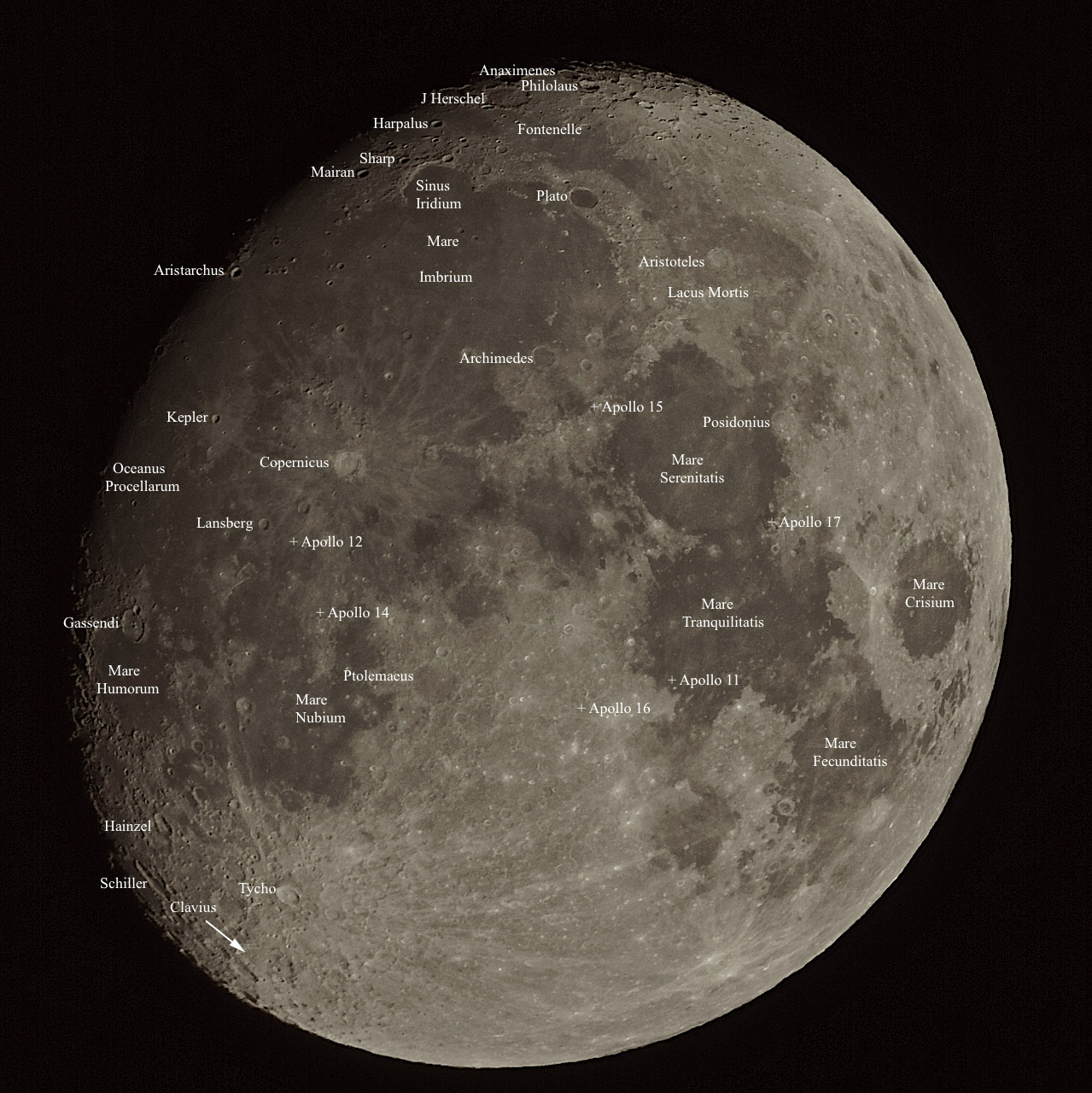March 14, 2014
First Time Observers Map

image by Lee DeCovnick
We often have friends, family and kids over to take their first look at the moon through a quality telescope. We use a 4" refractor for two reasons. First. almost everyone instinctively understands which end of the scope to look through, which is definitely not the case with a Newtonian or even an SCT like a Celestron 8. Second, many first time viewer are surprised by the brightness that hits their eye, and they become nervous about damaging their vision. The smaller aperture does a good job of reducing the moonlight to tolerable levels. And we use a high quality plossl (eyepiece) from 24mm to 32mm, since they are easy to look through and easy to focus for the novice observer.
So, when a first time observers looks at the moon through a quality scope, three things inevitably occur: everyone says, "Wow!" a couple of times, they quietly realize they have no idea what they are looking at, and they always ask where did the moon landings occur. Here’s where this map, which is uploaded onto my iPad. comes in handy. Since the map is made from a prime focus photograph thorough this same scope, the scale is pretty close to what they are seeing through the eyepiece. I hold the iPad, and then ask them to start identifying what they see through the scope with what’s on the map. Their ability to name the features they are seeing is nice experience for them and us. After identifying the major maria, it is an easy segue into talking about how the maria were formed, and why the molten magma migrated to the nearside of the Moon facing Earth. I also like to briefly explain the age differences between Tycho (108 million years) and Copernicus (800 million years) in the contest of their rays. Astronomy outreach is an important part of being an amateur astronomer.. our fondest hope is that the twenty minutes we spend with a first time observer will lead them onto a new path of discovery.
Lee DeCovnick
Technical Details
March 12, 2014, Walnut Creek, Ca, Stellarvue SV102AE-25SV, f/11 at prime focus, Nikon D7100 DSLR, Baader Semi-APO filter, 1/640 second exposure, ISO 1250. iPhoto and Apple Preview editing tools.
Yesterday's LPOD: Up, Up and Away
Tomorrow's LPOD: Have You Knowingly Seen This Basin?
COMMENTS?
Register, Log in, and join in the comments.



